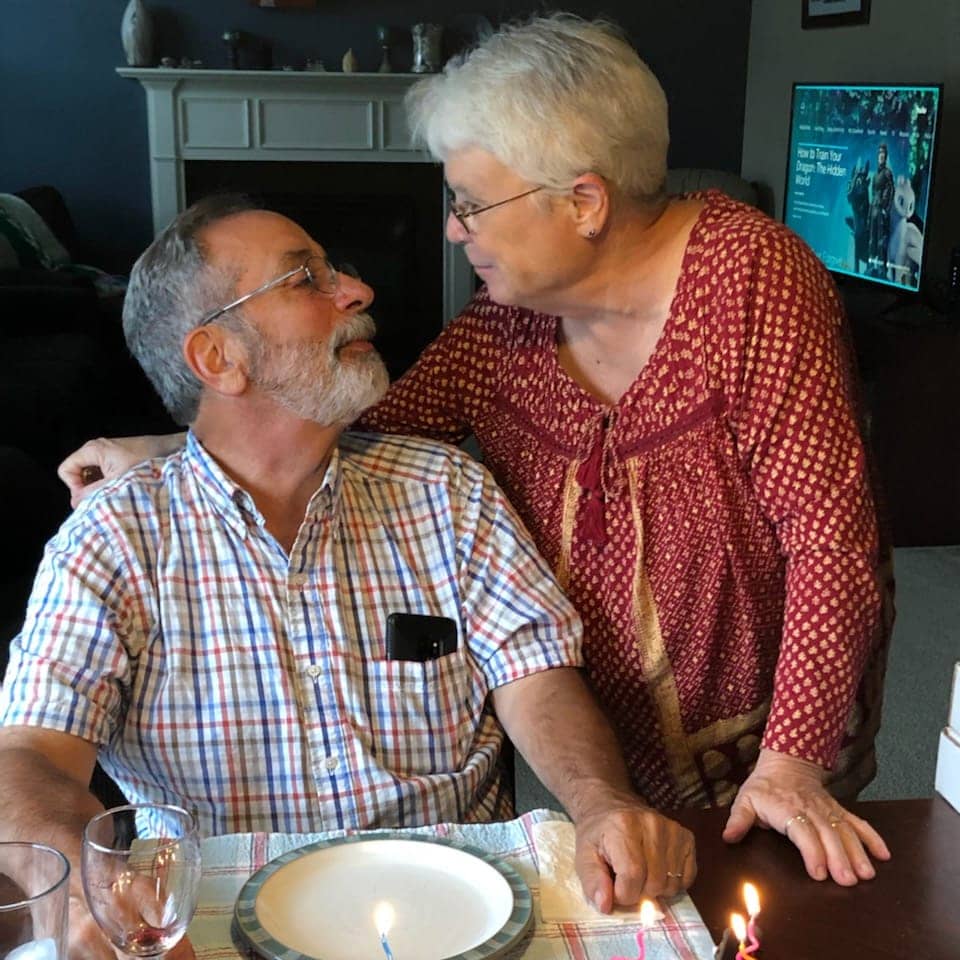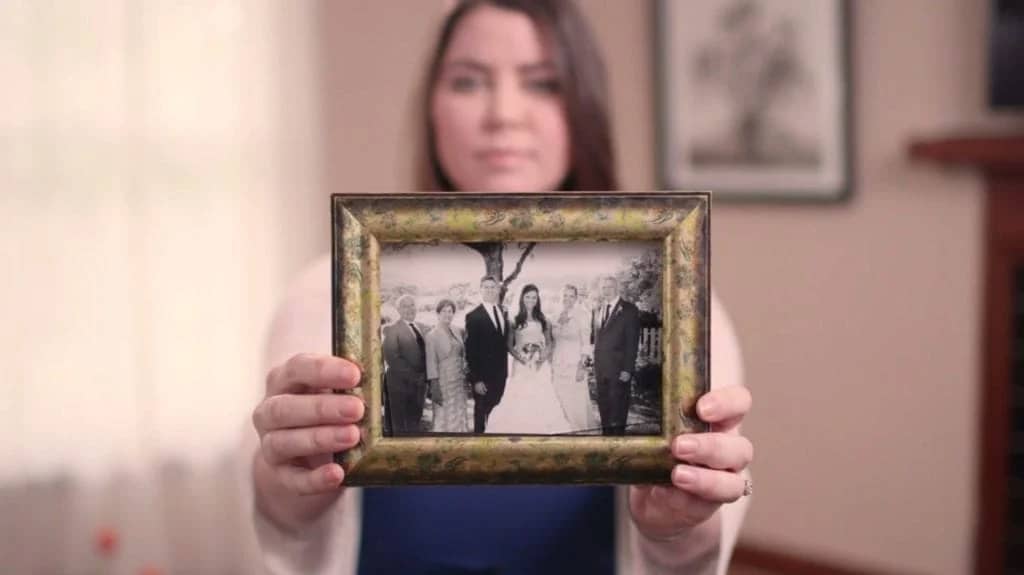
Mikki shared her story in January of 2024.
When John and I met, we were both in the midst of divorces. We became close friends, but to say I was quite leery of the idea of ever getting married again is an understatement. I can remember sitting with John over lunch, slamming my hand down and saying, “I’m never going to be a married woman again!” But our friendship was strong, and eventually it got to a point where we saw that this was potentially more than just friendship.
John was handsome. I loved his sparkly eyes and his wonderful laughter. I loved his beard — he had the greatest beard. And his hands — he had gentle hands, gentle with people and with animals. He made people comfortable in his company, and I was always amazed at how he could calm animals down, from bees to big horses.
When we told my daughter and John’s two kids that we were thinking about getting married, their “Yays” and “Yahoos” solidified that we were a family already. On our wedding day in November 1992, all three children stood beside us.
Nearly 30 years later, John was a vibrant, active 72-year-old. He took our grandchildren on trail rides, canoe paddles, and romps and rolls in newly-raked leaves, and taught them to play the Washburn version of competition solitaire.
In mid-November 2021, John mentioned that he was feeling bloated and experiencing sharp pain in his abdomen. He was so stoic and stubborn, adverse to medical interventions, that when he asked me to schedule the routine ultrasound ordered for an abdominal aortic aneurysm screening which he received at his last checkup, I knew something was up.
The ultrasound showed multiple abdominal masses. By this point, John’s pain was keeping him from being able to walk for any period of time; sitting was uncomfortable, and even his sleep was compromised by pain.
An additional scan and biopsy later, we had a diagnosis: peritoneal mesothelioma.
Mesothelioma is a sneaky cancer. The time between initial exposure to asbestos and diagnosis is typically 20-60 years. This was the case with John; the best we could guess, his exposure to asbestos was likely when he was a high schooler working at a car garage where asbestos-lined brake pads were being repaired.
John asked the oncologist to give him a prognosis, no holds barred. He wanted a clear, unvarnished explanation of what to expect with treatment versus palliative care. We were both pretty adamant about wanting control over our end-of-life journeys. As soon as we got married, we put in writing our wishes for limited life-sustaining interventions. We had often joked that when the time came, we could always find our way to the North Pole and hitch a ride on an ice floe into oblivion.
I told John that whatever the prognosis was, it was his call, his body, and I would respect and carry out his decisions and wishes.
The oncologist said the best we could hope for was six months to a year. The pain would worsen as the cancer advanced. John’s only option for real pain relief was treatment, which would include a needle biopsy, chemotherapy and a major surgery in March 2022 to remove as much of the disease as possible.
A month after surgery, another CT scan revealed that the disease was progressing with new enlarging lesions. Our oncologist suggested a three-month course of immunotherapy was our only remaining option to reduce pain and improve the quality of John’s remaining time.
Instead of an ice floe ride, we were on a roller coaster — an extremely scary, steep ride we desperately wanted to end but couldn’t.
Unfortunately, immunotherapy was a huge effort for John, and after three months the cancer had not only progressed, it had spread to lymph nodes in John’s chest and lungs. It was time to proceed with palliative and hospice care, and in early August 2022, that’s what we did.
John didn’t want to be in pain, but he also didn’t want to be so out of it on medication that he couldn’t communicate with people. We looked into moving to a state where the option of medical aid in dying was authorized, but John was so weak, and all his doctors were attached to the University of Pennsylvania. We just weren’t in a position to leave.
It was frightening to see how much of the opioid medication John needed to reduce his pain. With the help of the wonderful hospice nurses, we tried to make every day the best it could be. John asked if we could get to the beach to see the ocean one more time, so I drove him the two hours to Rehoboth Beach, Delaware. It was a beautiful day, with the ocean, a pod of dolphins and a splurge on Thrasher’s French Fries. It wiped John out.
A week later, John was experiencing painful bouts of nausea and vomiting. We knew we were approaching the end of the ride. John dictated messages to our grandchildren, instructing them, “Don’t be afraid of trying new things.”
On September 6, he asked me to join him in his hospital bed in our bedroom. He was crying. He told me how much he loved me and how much he wanted his journey to be over.
On September 19, he chose to stop eating and drinking. John’s remaining eight days were a steady decline; by the third or fourth day he could no longer speak. I knew he was holding on to make it past our youngest daughter’s birthday on September 25. Our children and John’s brother visited him on that day. The next day, September 26, John passed.
My husband’s end-of-life journey was extremely painful. It was not what he wanted. An ideal end would have been having a big party with our loved ones, then coming home to hug his family and say goodbye before he started to really waste away. If the option of medical aid in dying were available to him in our home state, he might have been able to conclude his journey saying, “I love you all very much, it’s been quite a ride,” hugging us goodbye. That’s what he wanted. And that’s what he couldn’t do.

Nothing advances our common cause of improving end-of-life care like real stories. Inspire others and drive change by sharing your story today.
Mail contributions directly to:
Compassion & Choices Gift Processing Center
PO Box 485
Etna, NH 03750